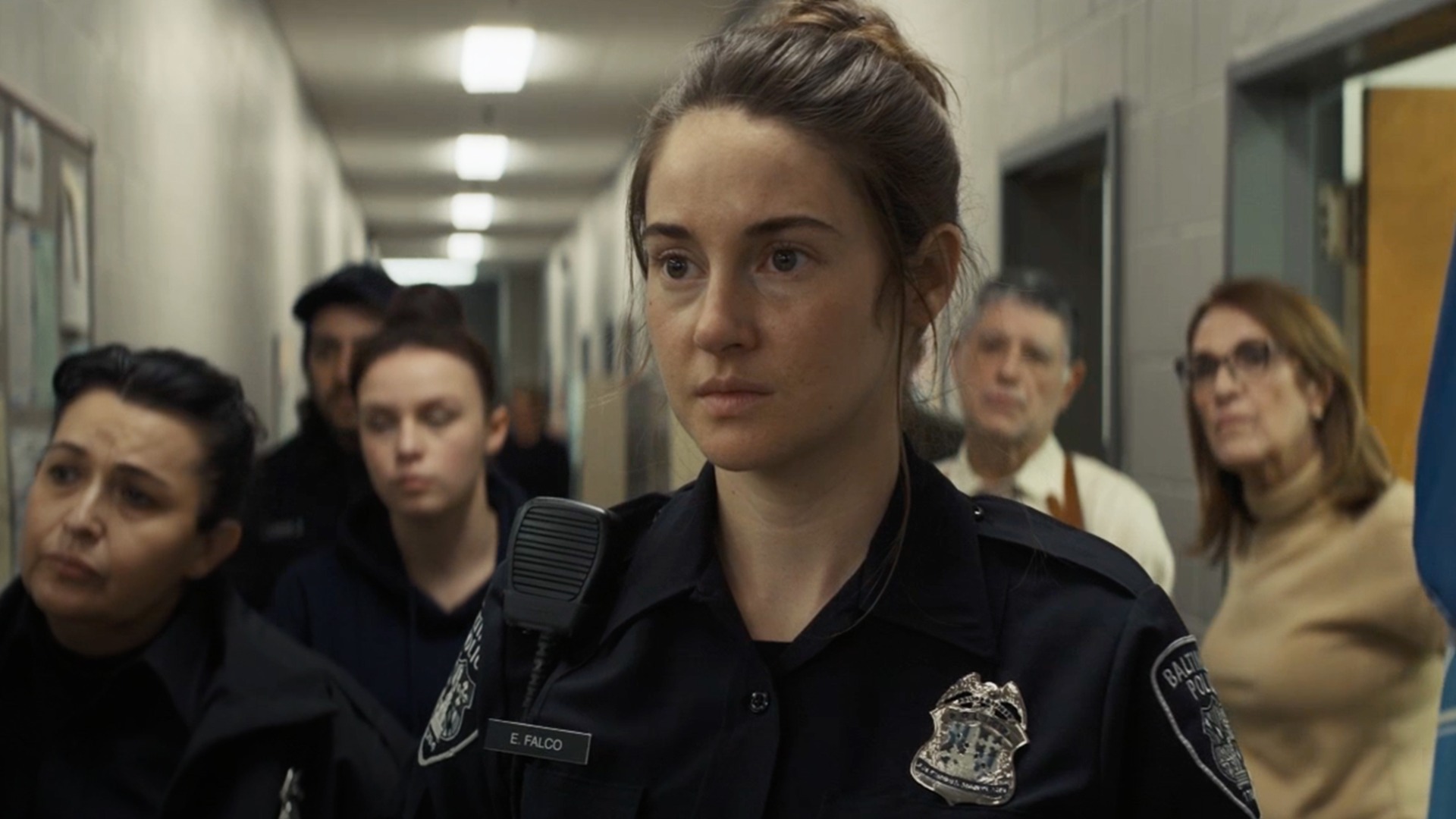To Catch a Killer’s logline is about as familiar as its title: a rookie cop with a detective’s intelligence and drive, Eleanor Falco (Shailene Woodley) finds her burgeoning career prospects perpetually dragged down by the demons that haunt her. Yet when a mass killer strikes the city, the chance for personal catharsis and her future in law enforcement firmly intersect.
The upside-down opening shot of the Baltimore cityscape (actually Montreal) followed by a rooftop EDM party at least kind of promises a gaudy affair, yet a good majority of the runtime is rather handsome widescreen compositions of various figures flanked by fluorescent office lights in police offices. Which is representative of how the tone and style are strangely hard to pin down: it seems stuck somewhere between a cold Fincher procedural and flashy, sleazy De Palma thriller.
Certainly there’s a little more effort put into the form than the average dumped, borderline straight-to-VOD release this represents. But its clumsiness emerges in both its more earnest melodrama and how the subject matter turns more serious with allusions to the notorious 2002 D.C. sniper as well as actual utterances of Breonna Taylor’s name; certainly a lot of heady material for what most will just see as a throwback to various ’90s potboilers.
There’s the sense To Catch a Killer wants to be more than something that reminds you of a Michael Douglas or Tommy Lee Jones thriller. The hodgepodge of real-world events and buzzwords definitely represents a misguided attempt to put its finger on the pulse. For originally going under the far-less generic title Misanthrope, the film seems to think it’s providing a kind of diagnosis for the mass-shooter problem of our times by touching on gun control, racial resentment, and police brutality. (The Baltimore setting alludes to a 2020s update of the seminal HBO procedural The Wire.) What’s disappointing is how it tantalizingly shows glimpses of a film that playfully deals with the surveillance state, only for its stance on the subject to be more verbose and literal-minded. The film’s depiction of “going viral” brings up hilarious flashbacks to a cop character in last year’s The Batman bragging that the Riddler’s Twitch stream had over 200 followers.
Curiously, it’s not an American handling this subject matter. This is the work of director Damian Szifron, whose last film was the Pedro Almodóvar-produced Cannes competition entry Wild Tales, and the near-decade gap between the two suggests he wanted to take the first “go movie” he could get. Decking the film out with assured, if not particularly original style, one doesn’t detect a true personal touch from the helmer who was likely once heralded as the future of Latin American cinema.
In general it’s a little hard not to wonder why anyone involved wanted to turn this script into a movie––other than as a gig-between-gigs, so to speak. Woodley, a likable actress but nobody’s idea of “grit,” doesn’t exactly make for a believable cop. That said, she convincingly plays wounded. Helping matters is the character of her commanding officer, Geoffrey Lammark (Ben Mendelsohn). The Australian actor––who always sounds like he’s in the middle of swallowing something when doing an American accent––appropriately chews scenery. Always trying to psychoanalyze her, the dynamic in their relationship alternates between mentorship and low-key toxicity; the undeniable arrogance he carries in every interaction, even when being sympathetic, is perhaps the film’s most intriguing element. Though for whatever interest is drummed up, the cornball dialogue these two exchange throughout sinks the believability factor.
In general, the film is a losing battle between loftier aspirations and genre requirements. Going for a downbeat ’70s ending that sees our protagonist walking alone into the distance, the film doesn’t earn it, with a third act more reminiscent of an episode of CSI.
To Catch a Killer opens on Friday, April 21.

